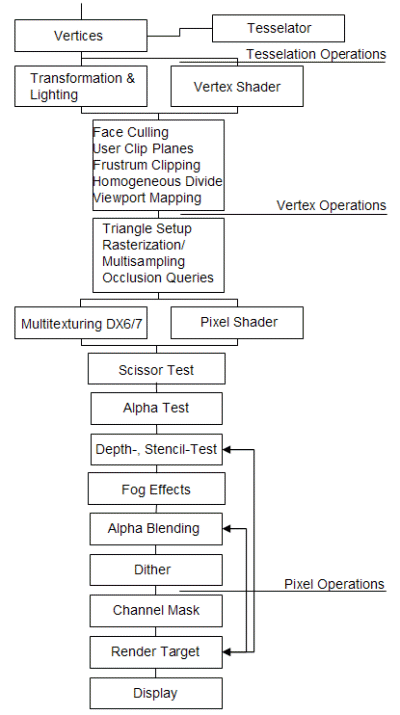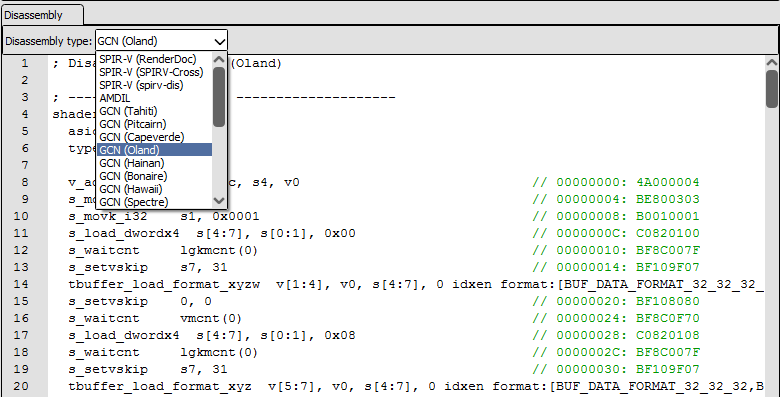

Hlsl also has types to describe textures. Luckily we nearly never have to access values in matrices, so thats more a tool to come back to than something you have to understand now. If we use the square bracket version and only use one pair of brackets we get the vector that defined that row. Those accessors can also be used for swizzling which looks like this matrix._m03_m13_m23 to get the 3 first values of the last column and write them into a 3d vector. Accessing the members of matrices works either via the square brackets like matrix with the numbers first declaring the row, then the column. The syntax for them is to append number x number to the sclar types. Like vectors expand types in one direction, matrices expand them in 2 directions.
#Hlsl shader viewer full#
vector.xxxx - take the first value of a vector and construct a 4d vector full of that value.vector.zyx - get first 3 values of vector and reverse their order.vector.xy - only get first 2 values of vector and put them in a 2d vector.Swizzling means writing multiple vector subvalues after the dot.

In case we want to get multiple values from a vector and put them in another vector, we don’t have to construct that new vector ourselves, we can use swizzling. Alternatively we can also access values like this: vector (this is 0 based so the 4 values of a 4d vector would be 0, 1, 2, and 3). When accessing one of the values inside a vector we use in order either vector.x, vector.y, vector.z, and vector.w in the context of coordinates or vector.r, vector.g, vector.b, and vector.a in the context of colors. We use those types for example to save texture coordinates, colors and positions. On top of the one dimensional types we can also access several vector types with up to 4 values by just adding a number to the end of a scalar(simple, one dimensional) type like fixed4, float2 or half3. If you use boolean values with other numbers (like adding or multiplying them) they behave like the number 0 in case its false or 1 if its true. In addition there is also the simple datatype bool which simple holds the value true or false so we can store the result of checks in them. Integers are numbers that can only have whole values, int can hold positive and negative values, uint only negative ones, which can have a slight performance benefit. On Desktop GPUs all of those values are 32bit floating point numbers, so you often see me use float everywhere out of convenience, but its a nice tool to have for optimisation later. On mobile GPUs fixed is a number between -2 and 2 with 1/256th precision, half is a 16bit floating point number and float a 32bit floating point number.

The different number types in unity hlsl are fixed, half and float for the floating point numbers and int as well as uint for integer numbers. Heres some of the builtin types we’re going to use when making shaders. So I’m going to assume you know types, variables, classes, methods, loops, if statements and similar basics. Shaders are tricky to debug, are pretty limited in the things they can do and in many cases you have to thing in a slightly different direction than in most programming contexts. In theory Unity also supports writing glsl shaders, the language designed for OpenGL, but since there are more examples for hlsl and in the end the languages will be converted into whatever language the platform we’re exporting to needs anyways we’re gonna stick to hlsl.įor learning shaders in Unity I recommend you do not start your programming jouney here. Strictly speaking most Unity shaders are tagged as being written in CG which is short for C for Graphics, but CG shares most of it’s syntax and features with hlsl and was deprecated in 2012, so wrongly referring to it as hlsl leads to you being able to find better results in search engines and not much else. It’s the language Microsoft designed to work with their Direct3D API to write gpu programs. The parts that contain custom logic and eventually decide what is drawn where on screen. Hlsl is the language the “juicy” parts of unity shaders are written in.


 0 kommentar(er)
0 kommentar(er)
